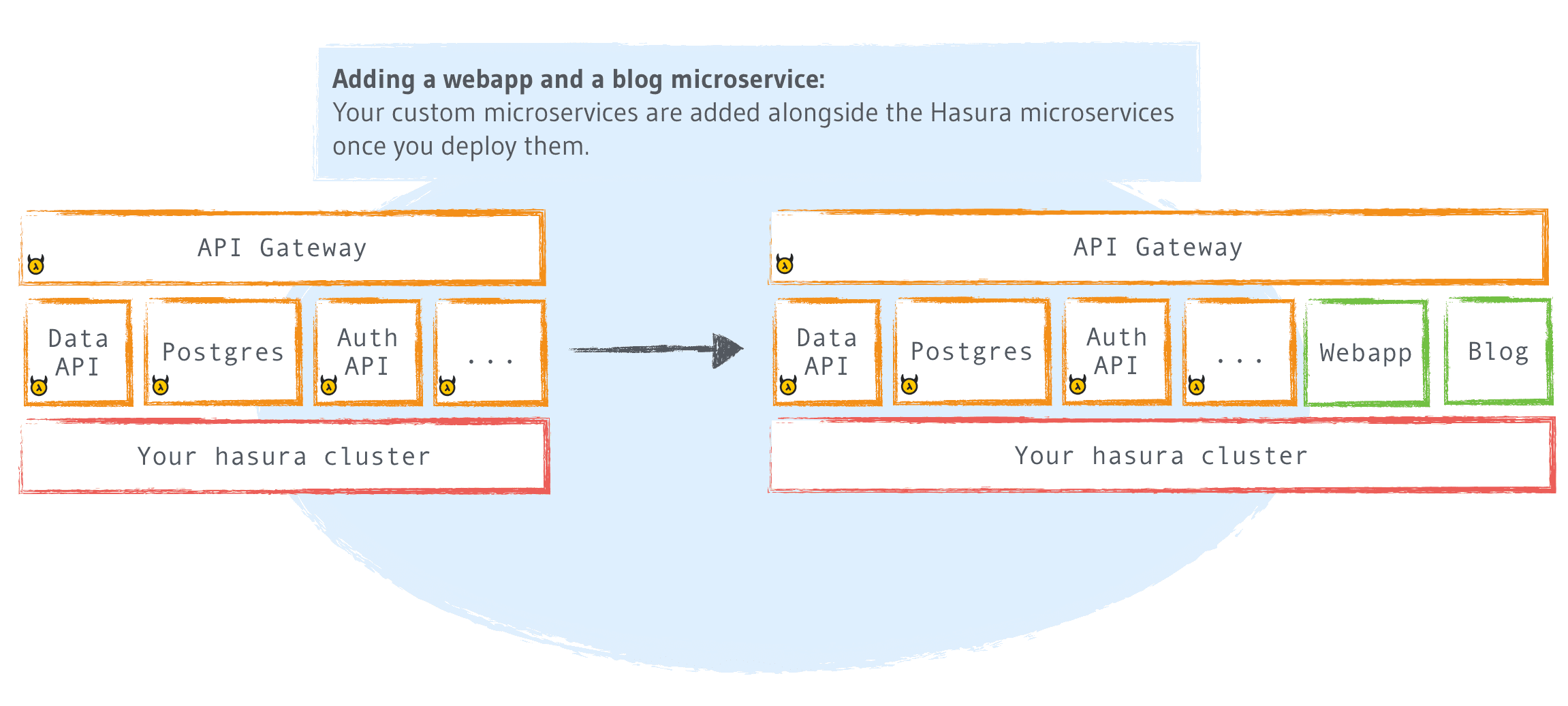Hasura project microservices¶
A Hasura project is composed of a set of microservices. These include certain “Hasura microservices” along with your own custom microservices. Microservices are basically the individual ‘apps’ that run on a Hasura cluster.
Hasura microservices include the backend APIs provided by Hasura and other components of the Hasura platform.
Some typical examples of custom microservices you would add to your project include an API service, a microservice that serves static files, a simple HTML site or a single-page app (eg: React), a ready made microservice like the ghost blog-engine or a ‘stateful’ microservice like a database.
Hasura microservices run in the hasura namespace while custom microservices run in the default namespace on a cluster.
Note
If you are starting a new Hasura project, head to hasura.io/hub to find the right boilerplate project for you and follow the guide there!
Here’s what your Hasura cluster looks like before and after you add custom microservices:

Now that you’re familiar with the basic concepts of what a microservice is, See:
- Hasura microservices
- Adding custom microservices
- Debugging microservices
- Viewing microservice logs
- Exec / SSH into microservice containers
- List running microservices
- Passing ENV variables to a microservice
- Changing subdomain of a microservice
- Communicating between microservices
- Connecting to Postgres from microservices
- Live reloading changes to a microservice
- Adding persistent volumes to a microservice